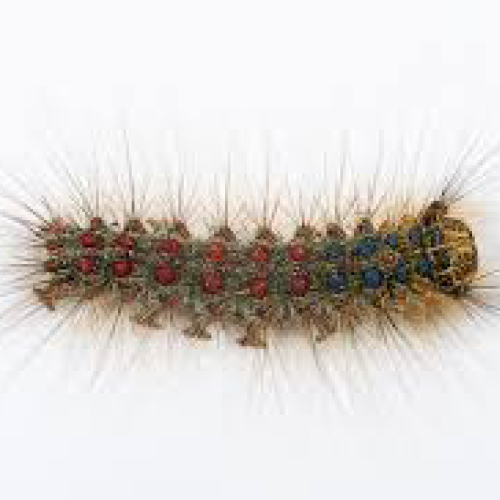The European Gypsy Moth – It’s here!

There have been several sightings of the tiny gypsy moth caterpillars in Mississippi Mills over the past week. If you haven’t seen them take a close look at a tree, unfortunately they are everywhere! The European gypsy moth is an invasive and destructive pest that can pose a risk to deciduous and coniferous tree species.
The Municipality of Mississippi is monitoring the situation. While it is disappointing to see the leaves disappear, we believe there is no need to panic. Experts agree nature will right itself. Gypsy Moths are cyclical, with peaks every 7-10 years. Natural predators, especially birds, have adapted to feeding on this European pest. In addition, fungal disease keeps them in check. The gypsy moth overwinters in the egg stage often on the bark of trees. In the spring, eggs hatch and feed on the leaves of the tree. Feeding occurs during the day, but as the caterpillars mature feeding happens mainly at night. By July, the caterpillars are done feeding.
We have consulted with our local tree experts Ron Ayling, Allan Goddard and Ed Lawrence and they feel confident saying the vast majority of trees will survive and rebound in 2022 and we may even see regrowth later this summer. Newer trees are at greater risk of succumbing to the attack. If you have recently planted trees on your property there are some preventative steps you can take. Watch for another article written by Allan Goddard coming soon.
The Recreation Department appreciates the hard work of community volunteers who have been hard at work on some preventative action on some of the newer trees in community parks.
For more information about the gypsy moth caterpillar and how to deal with them on your own property.
Lanark County's invasive species webpage
Invasive Species Centre Gypsy Moth webpage
Government of Ontario's Gypsy Moth page
Canada.ca Gypsy Moth Info including Pest Control Tips
Webinar: Forests under attack: The history, dispersal, and management of gypsy moth












